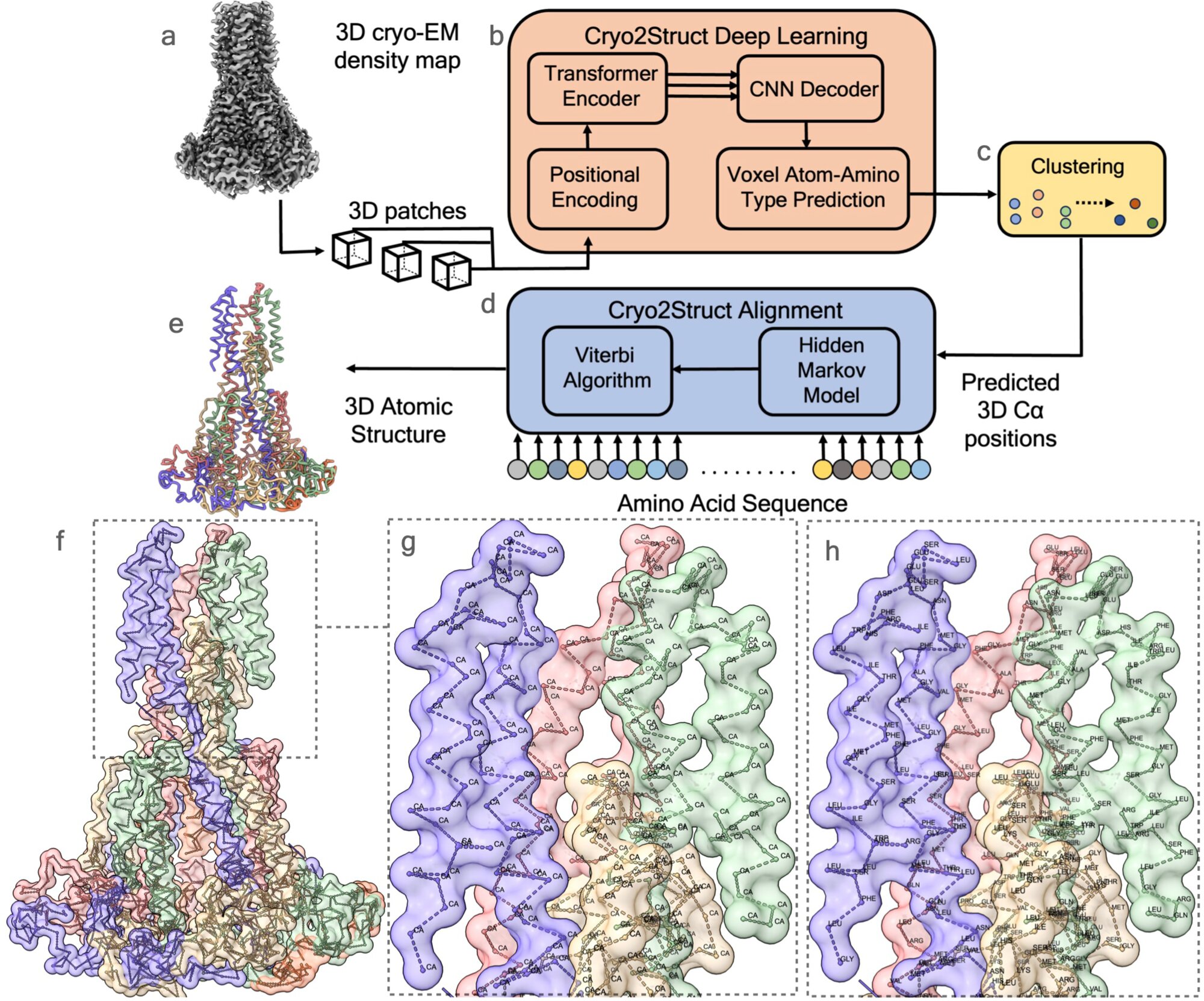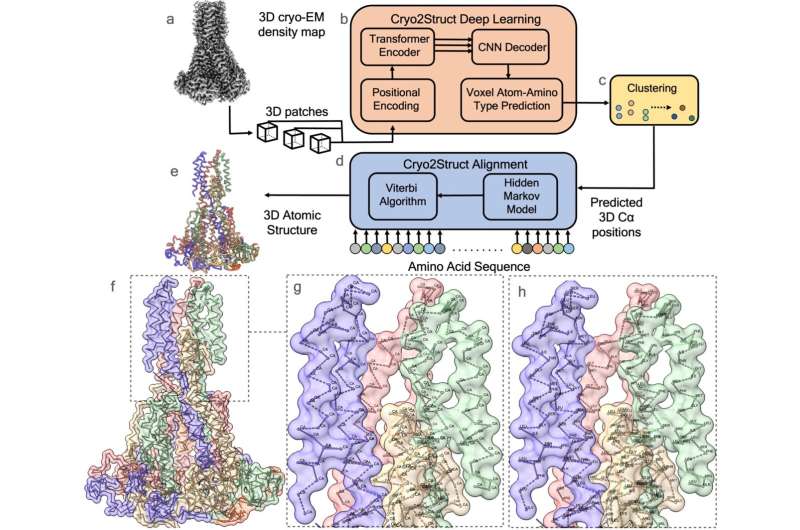

A University of Missouri researcher has created a computer program that can unravel the mysteries of how proteins work together—giving scientists valuable insights to better prevent, diagnose and treat cancer and other diseases.
Jianlin “Jack” Cheng from Mizzou’s College of Engineering and his student, Nabin Giri, have developed a tool called Cryo2Struct that uses artificial intelligence (AI) to build the three-dimensional atomic structure of large protein complexes, work recently published in Nature Communications. The model uses data from pictures of frozen molecules captured by powerful microscopes, or cryo-electron microscopy (cryo-EM) images.
“Cryo-EM right now is a revolutionary, key technology for determining large protein structures and assemblies in cells,” said Cheng, a Curators’ Distinguished Professor of Electrical Engineering and Computer Science.
“But building protein structures from Cryo-EM data is labor intensive and requires a lot of human intervention, making it time-consuming and hard to reproduce. Our technique is fully automated and generates more accurate structures than existing methods.”
Predicting proteins
To understand the significance of the work, you have to know a bit about proteins and the decades-old struggle to understand them.
Proteins are the building blocks of life. They start as strings of amino acids that fold into three-dimensional shapes. Those shapes determine how a protein will function.
For more than 50 years, that folding process baffled researchers.
Cheng was among the first to apply deep learning, a type of AI, to the problem. In 2012, he demonstrated an AI-based model that proved deep learning could predict protein structures. The work paved the way for groundbreaking advancements, including Google’s AlphaFold, now considered the most accurate tool in the world for predicting protein structures.
But predicting a single protein structure is only half of the problem. In the real world, proteins work together as molecular machines that carry out complicated biological functions. Understanding protein interactions is critical because they determine how diseases develop and help scientists figure out how best to treat them.
Cracking the code
Cheng’s Cryo2Struct operates a little like a detective cracking a case without any clues.
The system analyzes cryo-EM images and identifies the individual atoms and their positions within a protein complex, even when there’s no prior knowledge of the structure. The system can then assemble these atoms into a complete 3D model of protein complexes, providing insights into how proteins function.
“Our technology enables scientists to determine and build a structure from cryo-EM data,” Cheng said. “Once you have that structure and understand its functions, you can design drugs to counter any faulty functions of a protein complex to make it function properly.”
In a related paper published in Communications Chemistry, Cheng and his student, Alex Morehead, explored a different AI method called a diffusion model, modeling how molecular structures evolve from random noise into well-defined shapes. Those methods can help scientists generate and optimize small molecules, including drugs, and determine how and where those drugs bind to proteins.
“For instance, I have a drug, and I want to make it work better for some patients,” Cheng said. “Now I can use AI to change it and optimize it.”
Mizzou’s interdisciplinary resources helped make the breakthrough possible. Cheng is a researcher at NextGen Precision Health, where he has access to Cryo-EM and high-resolution electron microscopy.
“The opportunities at Mizzou to collaborate with other researchers and utilize state-of-the-art equipment are unparalleled,” he said. “At NextGen, we’re all working to advance highly individualized health care, and technologies like Cryo2Struct will help make that possible.”
More information:
Nabin Giri et al, De novo atomic protein structure modeling for cryoEM density maps using 3D transformer and HMM, Nature Communications (2024). DOI: 10.1038/s41467-024-49647-6
Alex Morehead et al, Geometry-complete diffusion for 3D molecule generation and optimization, Communications Chemistry (2024). DOI: 10.1038/s42004-024-01233-z
Provided by
University of Missouri
Citation:
Paving the way for new treatments with a tool that builds 3D structures of protein complexes (2024, September 23)
retrieved 24 September 2024
from https://phys.org/news/2024-09-paving-treatments-tool-3d-protein.html
This document is subject to copyright. Apart from any fair dealing for the purpose of private study or research, no
part may be reproduced without the written permission. The content is provided for information purposes only.